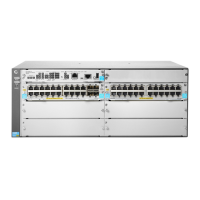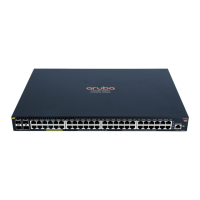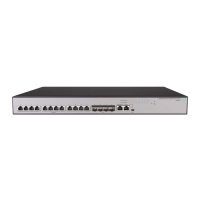213
Step Command Remarks
2. Enter VLAN view.
vlan
vlan-id N/A
3. Enable ARP snooping.
arp snooping enable
By default, ARP snooping is disabled.
For more information about ARP
snooping commands, see Layer 3—IP
Services Command Reference.
Configuring the customer-side port
Step Command Remarks
1. Enter system view.
system-view
N/A
2. Enter Layer 2 Ethernet
interface view.
interface
interface-type
interface-number
N/A
3. Set the link type of the port.
• Configure the port as a trunk
port:
port link-type trunk
• Configure the port as a
hybrid port:
port link-type hybrid
By default, the link type of a port is
access
.
4. Assign the port to the original
VLANs and the translated
VLANs.
• port trunk permit vlan
vlan-id-list
• port hybrid vlan vlan-id-list
tagged
N/A
5. Configure a many-to-one
VLAN mapping.
vlan mapping
uni
{
range
vlan-range-list |
single
vlan-id-list }
translated-vlan
vlan-id
By default, no VLAN mapping is
configured on an interface.
Configuring the network-side port
Step Command Remarks
1. Enter system view.
system-view
N/A
2. Enter Layer 2 Ethernet
interface view or Layer 2
aggregate interface view.
• Enter Layer 2 Ethernet
interface view:
interface interface-type
interface-number
• Enter Layer 2 aggregate
interface view:
interface
bridge-aggregation
interface-number
N/A
3. Set the link type of the port.
• Configure the port as a trunk
port:
port link-type trunk
• Configure the port as a
hybrid port:
port link-type hybrid
By default, the link type of a port is
access
.
4. Assign the port to the
translated VLANs.
• port trunk permit vlan
vlan-id-list
• port hybrid vlan vlan-id-list
tagged
N/A
5. Configure the port to use the
original VLAN tags of the
many-to-one mapping to
vlan mapping
nni
By default, the port does not
replace the VLAN tags of the

